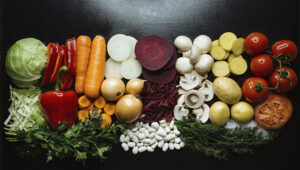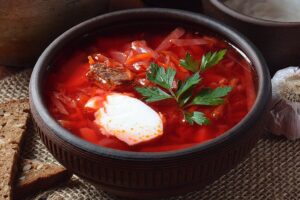
In January-June 2025, Ukraine imported $152.018 million worth of “borsch” vegetables, including potatoes, carrots, beets, cabbage, and onions.
According to statistics released by the State Customs Service (SCS), Ukraine increased its imports of potatoes by 7.9 times to 121.606 thousand tons during this period, purchasing them for $65.145 million, which is 6.9 times more than in the same period in 2024.
It is noted that in the first half of the year, 36.49% of the market of potatoes imported to Ukraine belonged to Poland, which was able to earn $ 23.77 million from its sale. At the same time, Egypt supplied 13.73% of the imported volumes for $ 8.945 million, the Netherlands – 11.66% for $ 7.594 million.
In January-June 2025, Ukraine slightly reduced onion imports by 1.1% to 15.747 thsd tonnes, spending $17.69 mln on the purchase of onions compared to $15.5 mln a year ago.
The top three suppliers of onions to Ukraine were China and Egypt, which accounted for 26.96% and 21.55% of imports, which in monetary terms amounted to $4.769 million and $3.812 million, respectively. The Netherlands closed the top three with a share of 18.85%, supplying this product for $3.335 million.
During this period, Ukraine imported cabbage 2.5 times more than a year ago – 47.252 thousand tons versus 18.969 thousand tons, respectively, spending 2.4 times more on its purchase than in the first half of 2024 – $42.075 million versus $17.804 million. Its main suppliers were Macedonia (33.3% of supplies worth $14.022 million), Poland (24.9% worth $10.481 million) and the Netherlands (13.47% worth $5.668 million).
In January-June 2025, Ukraine increased imports of carrots, beets and celery by 7.9 times compared to the same period last year – up to 43.065 thsd tonnes, spending $27.108 mln against $4.36 mln respectively.
The main suppliers of these goods were Poland, Moldova and the Netherlands, which accounted for 47.04%, 13.53% and 11.93% of the imported volumes, respectively. In monetary terms, these countries earned $12.752 million, $3.667 million and $3.235 million, respectively, from the supply of root crops to Ukraine.

In June, Ukraine saw a significant increase in meat prices, while the cost of young vegetables and eggs decreased, according to the food monitoring report by the Ukrainian Agribusiness Club (UAC).
Analysts noted that prices for vegetables from the previous harvest continue to rise. The borscht index fell by 12% over the month, but rose by 27% over the year, reaching UAH 196. This is UAH 26 cheaper than last month, when the cost of the dish was UAH 222.
“Vegetable prices are showing seasonal dynamics: new harvest products are becoming cheaper, while old ones are becoming more expensive,” the UACB emphasized.
The retail price of onions reached 40 UAH/kg, which is 33% more than a month ago and 32% more than last year. Old potatoes on supermarket shelves rose in price by an average of 10% over the month, to 38 UAH/kg (+33% over the year). At the same time, new harvest vegetables are appearing on the market, putting pressure on prices. For example, young cabbage fell in price by 66% over the month to 25 UAH/kg (but +64% compared to last year). Cucumber prices continue to fall, down 18% over the month and averaging 65 UAH/kg, which is also 11% cheaper than last year. Tomatoes remain stable at around 99 UAH/kg, but are 12% more expensive than a year ago.
Experts drew attention to the meat market, where changes are most noticeable and prices have risen sharply. In particular, beef (goulash) rose in price by 6% over the month, to 336 UAH/kg (+20% year-on-year). Chicken showed even more rapid growth: fillets rose in price by 11% to 222 UAH/kg (+39% year-on-year), thighs by 28% to 154 UAH/kg (+39%), and carcasses by 25% to 110 UAH/kg (+42%). In contrast, the price of pork neck remained stable at 330 UAH/kg, which is, however, 31% higher than a year ago.
“The significant increase in chicken prices is partly explained by higher feed costs, while beef is becoming more expensive amid limited supply,” the business association explained.
At the same time, the dairy segment has shown stable price dynamics over the past month, which is explained by an increase in the supply of raw materials. For example, milk fell by 2% to 54.3 UAH per 900 ml, cream by 6% to 33.3 UAH per 200 g, and hard cheese rose slightly in price (+1%) to 631 UAH/kg.
According to analysts, prices for groceries also remain stable thanks to sufficient volumes of products on the market and steady demand. For example, sunflower oil fell by 2% to UAH 75.3 per 850 ml, and sugar by 1% to UAH 32.7 per kg.
In addition, there has been a slight decrease in prices for chicken eggs, which in category C1, in particular, fell by 5% over the month to 68.9 UAH per dozen, although in annual terms their cost remains 79% higher.